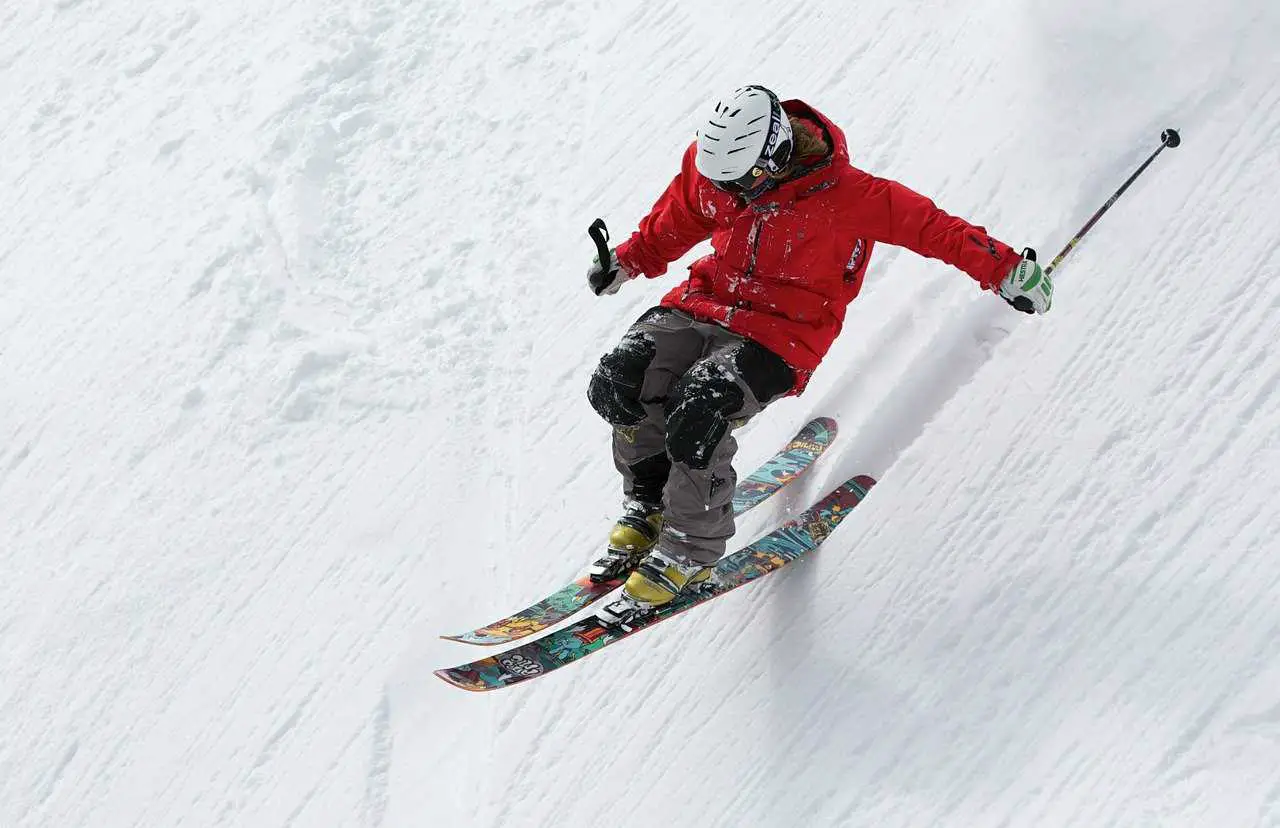Skiing might look simple. Those glides turns and fancy manoeuvers that professionals pull off on mountain slopes seem easy enough. Nevertheless, try it yourself, and reality will slap you hard. You will discover that even maintaining posture while wearing skis is hard. Even more so with making yourself glide forward. Just like any other sport, learning the basics is the key to being good at skiing.
This article will be your instant coach to learning skiing for the first time. Put those skis away for a while and read the skiing techniques and other related topics that will help you conquer those slopes while being safe from crashes, broken bones, and other types of accidents.
Skiing Techniques For Beginners
Why Are Skiing Techniques For Beginners Important?
Have you ever done something without prior knowledge before? Being successful unless you’re a genius is difficult, right? Skiing is an extreme sport. There are lots for you to consider while doing it, such as balance, speed, manoeuvrability, control, etc. With that being said, doing all of these at once without proper training will be impossible. Believe it or not, the best that could happen is you hurting yourself.
Pro skiers didn’t make skiing techniques for beginners in the name of formality or just for the sake of having something to market in their skiing centres. Teaching skiing techniques for beginners is important because it builds the foundation of advanced skiing techniques such as jumps, immediate stops, speedy turns, etc.
Skiing techniques for beginners also prepare the body for executing advanced skiing techniques. For example, they make coordination of the legs and body more fluid, make the specific parts of the body adapt to the act of skiing or train the body’s responses to situations related to skiing.
What’s more is that you can’t do advanced skiing techniques without learning the skiing techniques for beginners. Skiing techniques for beginners make it easier for you to understand the underlying principles of advanced skiing manoeuvers. They also help create a skiing technique that’s unique to you.
Important Things To Do Before Learning A Skiing Technique For Newbies
You have to do a lot of warm-ups before attempting to learn any basic skiing techniques. You can try out these warm-ups at home before going to the ski resort or at the ski resort itself just before attempting to learn any basic skiing techniques. These are the warm-ups that you should do.
Knee Bends or Squats
Knee bends or squats train the shin and knees against the fatigue that you’ll fill while learning skiing techniques for newbies. Here’s how you do knee bends or squats as a form of warm-up:
- Stand straight and raise your arms forward
- Put your feet close together
- Start bending your knees until the hips are level with them
- Hold this position for at least five seconds
- Go back to the original position
- Repeat this for 16 counts
Arm Sways
Arm sways prepare the arms for the fatigue that comes whenever you’re using the skiing poles for practice. Some skiing techniques for newbies revolve around the poles. Examples are gliding and turning. Here’s how you perform arm sways as a form of warm-up.
- Get at least two objects that weigh at least 2 pounds and hold each with your hands
- Put yourself in a squatting position. Lower the hips to the mid-portion of your thighs
- Start swaying the arms at a 90-degree angle while holding the objects
- Keep doing this for 16 counts
Foot Rotations
Foot rotations loosen your feet so that they don’t easily get a sprain while wearing the skis. Aside from being painful, you don’t want sprains to happen because they make you lose balance or lose directional control that are the common causes of ski-related accidents. Here’s how you do foot rotations as a form of warm-up:
- Stand straight
- Put each of your hands on each side of the hips
- Raise the right foot in front
- Rotate the right foot clockwise for eight counts and counterclockwise for another eight counts
- Put the right foot down and switch to the left foot
- Rotate the left foot clockwise for eight counts and counterclockwise for another eight counts
Body Sways
Skiing involves a lot of use of the torso. Some skiing techniques for beginners, such as turns and jumps, involve the body. As a result, you should limber up to make practice more efficient. Body sways are the best for making the body lose before practising. Here’s how you do perform it for warm-up:
- Stand erect
- Put your feet at least 10–20 centimetres from each other
- Put each of your hands on each side of the hips
- Sway your body, starting from the left going to the right. Do this for eight counts
- Sway your body in the opposite direction. Do this for eight counts
Skiing Techniques For Newbies
After doing the warm-ups above, I’m sure that your body is loose enough for doing basic skiing techniques. This section of this article talks about the main subject in great detail. With that being said, I invite you to read parts that you don’t understand completely once again.
Skiing Stance
The skiing stance is the first technique that you have to learn. A great skiing stance means more comfort while riding the skis. In contrast, a bad skiing stance results in jerky movements. Follow these instructions to start practising your skiing stance:
- Stand in a straight position. Relieve all parts of our body from tension. Breathe deeply if this helps you do so.
- Start lowering your hips a bit. At the same time, positions your shins just a bit in front of it
- Position the hands next. The hands should be on the side of the laps with the poles at a 40–50 degree angle
- Hold this position for about 1 minute
- Go back to the original position and repeat everything until your body automatically assumes a skiing stance
Another technique that you can supplement while practising this technique is rotational movements. As the name implies, rotational movement is when you turn your body going left or right without moving the hips. You may practise this after doing the last step in learning the above skiing technique.
The Snow Plough
In skiing, knowing how to stop is more important than knowing how to move forward. It’s important to remember this point because once you’re zooming down the slope, you’ll travelling 10–30 miles an hour at most. With that being said, never attempt to move forward with the skis without knowing the snowplough — the most basic technique in skiing that brings you to a halt. Here’s what you have to do to learn the snowplough.
- Find a groomed slope that has a steepness of 5–17 degrees. In ski resorts, you’ll find these on green circle locations.
- Stand on its topmost part. Assume the skiing stance and ask someone to push you to move forward
- While moving, gradually bring the tip of each ski at the centre (space between your legs) so that they assume a V shape.
- Apply pressure on the inner edge of each ski to perform the snowplough
Mastering this beginner’s technique takes time. That’s why you have to be very patient with it. Nevertheless, if you learn to perform the snowplough without thinking about it, performing quick turns and flashy stops while skiing is only one step away.
Gliding Forward
Gliding forward with the skis on your feet is relatively easy compared to the abovementioned beginner’s techniques. All you have to do is assume the skiing stance once again and start pushing against the snow with the skiing poles. As a first-timer, it’s common for one of your feet to go ahead of the other. If this happens, do your best to pull the foot that attempts to move ahead level with the other foot.
Inclined Turns
So how do intermediates and pros look so graceful when turning to go left or right while skiing? The secret is that they have mastered the art of inclined turns. A common pitfall among amateurs is that they attempt to point the tip of the skis with their foot on toward the direction that they want to go. This results in awkward-looking turns and a lack of direct control.
The best way to turn while skiing is to practise inclination. This is the act of leaning your body towards the direction where you want to go while skiing — if you want to go right, then lean rightward, and if you want to go left, then lean leftward. Doing this shifts your weight on either of the edges of skis. When this happens, the skis will go in the direction where your body is currently leaning. Here’s how you practise inclined turns:
- Go to a wide slope in the ski resort that has a steepness of at least 30–45 degrees. Again, it should be groomed so that you don’t face a lot of difficulties
- Start moving slowly but be sure not to push hard against the snow so that you won’t go too fast
- Try inclining your body from left to right. Remember not to lose your centre of gravity
- Repeat this process until your body doesn’t easily lose balance every time you attempt to incline
How Long Does It Take To Practise Beginner Skiing Techniques?
The answer to this question depends on your level of skill and your physical limitations. If you have a coach, expect that you’ll learn the above techniques in less than two weeks. On the other hand, it takes longer if you learn on your own. Expect to learn the above techniques within a month.
If you ask me whether it’s better to learn alone or with someone, I recommend the latter over the former. Having someone to learn with you will be beneficial since he or she can point out the mistakes that you’re making. Also, he or she can help you whenever dangerous situations arise.
Do You Really Have To Practise On A Ski Resort?
Actually, you can practise anywhere — on the hill, your backyard slope, etc. However, I strongly recommend that you go to skiing resorts because they have dedicated areas for practising. Moreover, practising in ski resorts is safer. They help you avoid falling from tree wells/spruce traps, encountering wild animals or avalanches.
What To Do After Mastering Skiing Techniques For Beginners?
After you’ve learned them all, it’s time for you to enjoy the fun that skiing brings. However, don’t get too cocky and challenge steep and ungroomed slopes. Basic skiing techniques only allow you to ski on green circles up to blue circles. If you want to challenge black diamonds or double black diamonds, learn advanced skiing techniques first.

